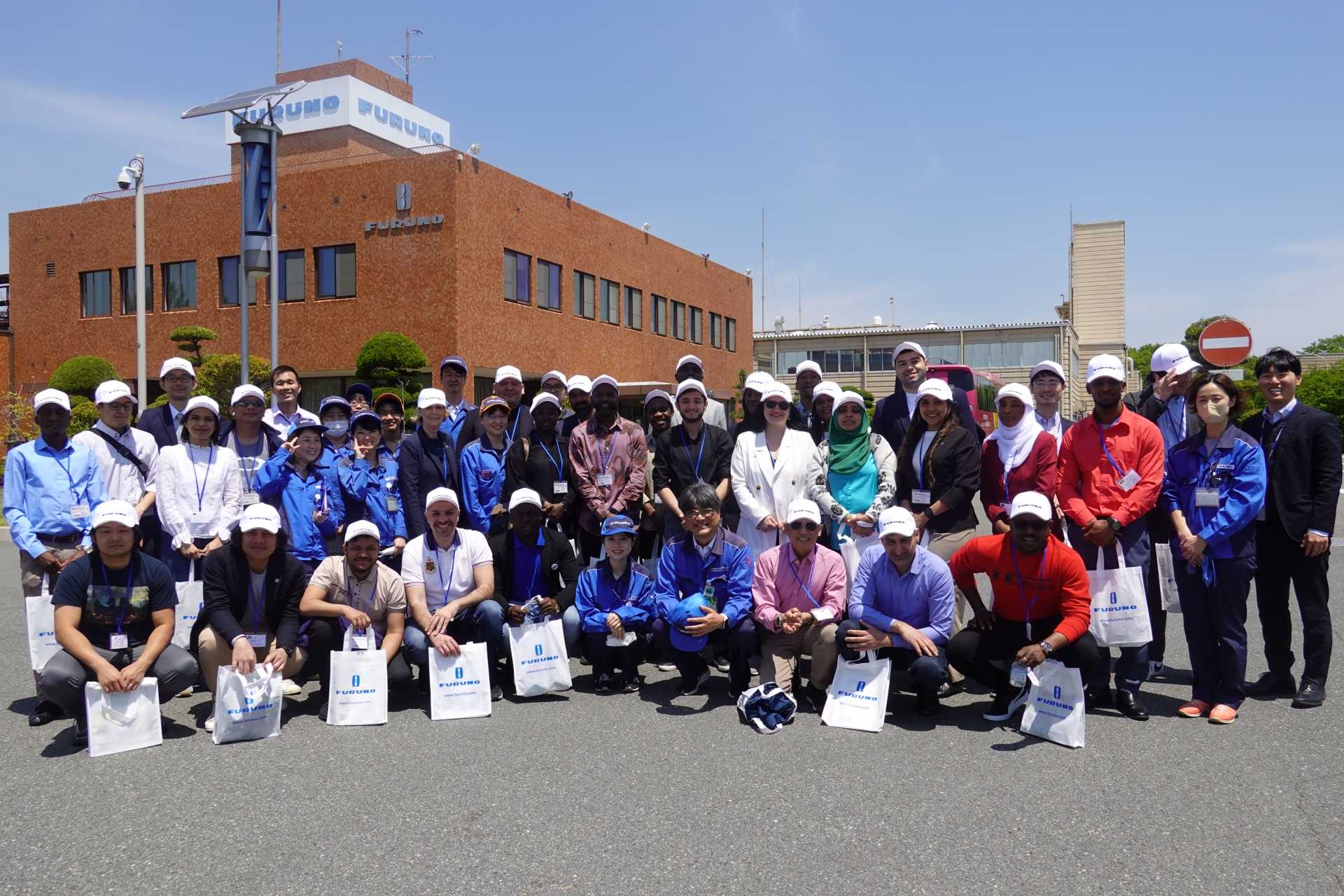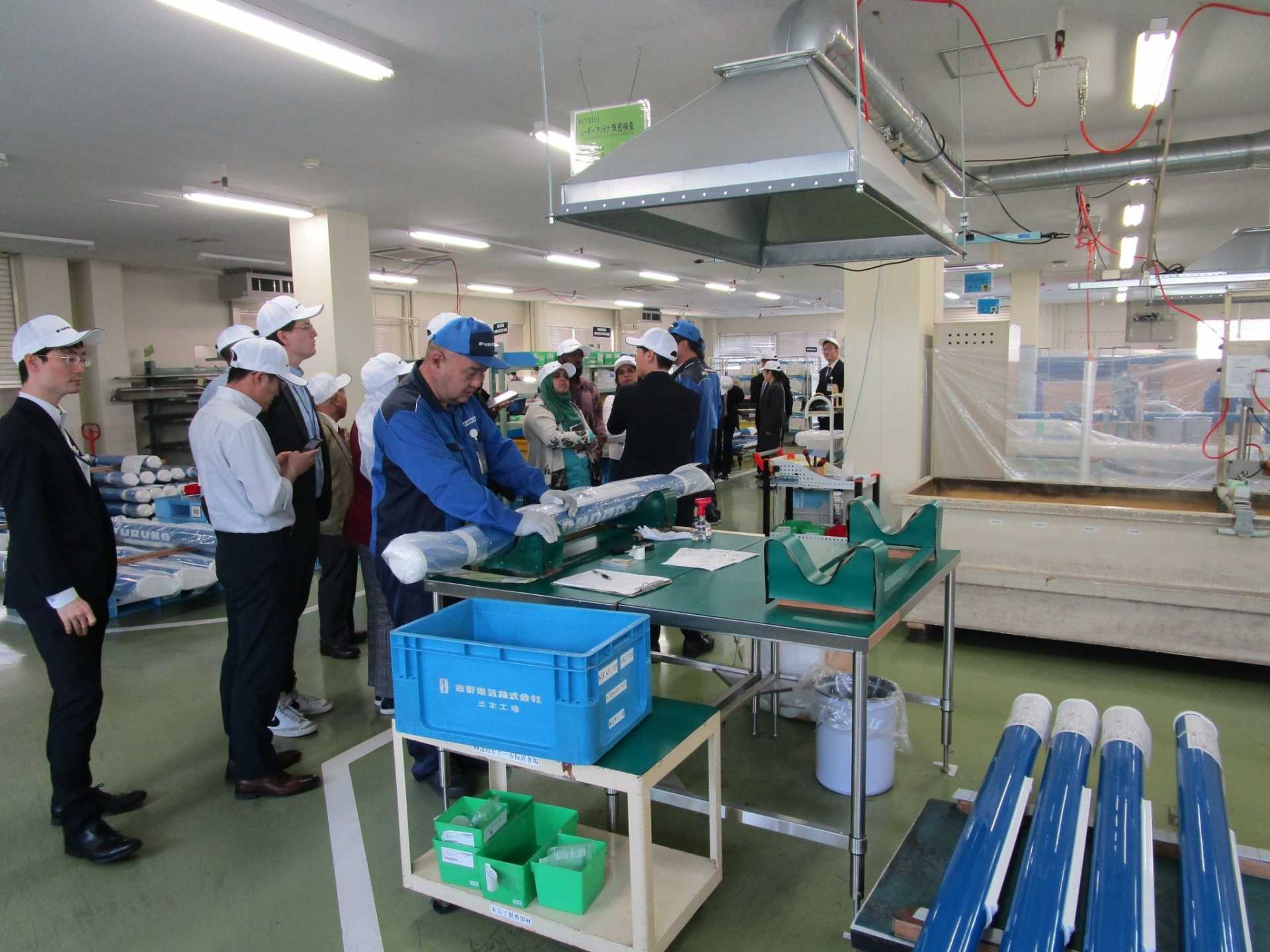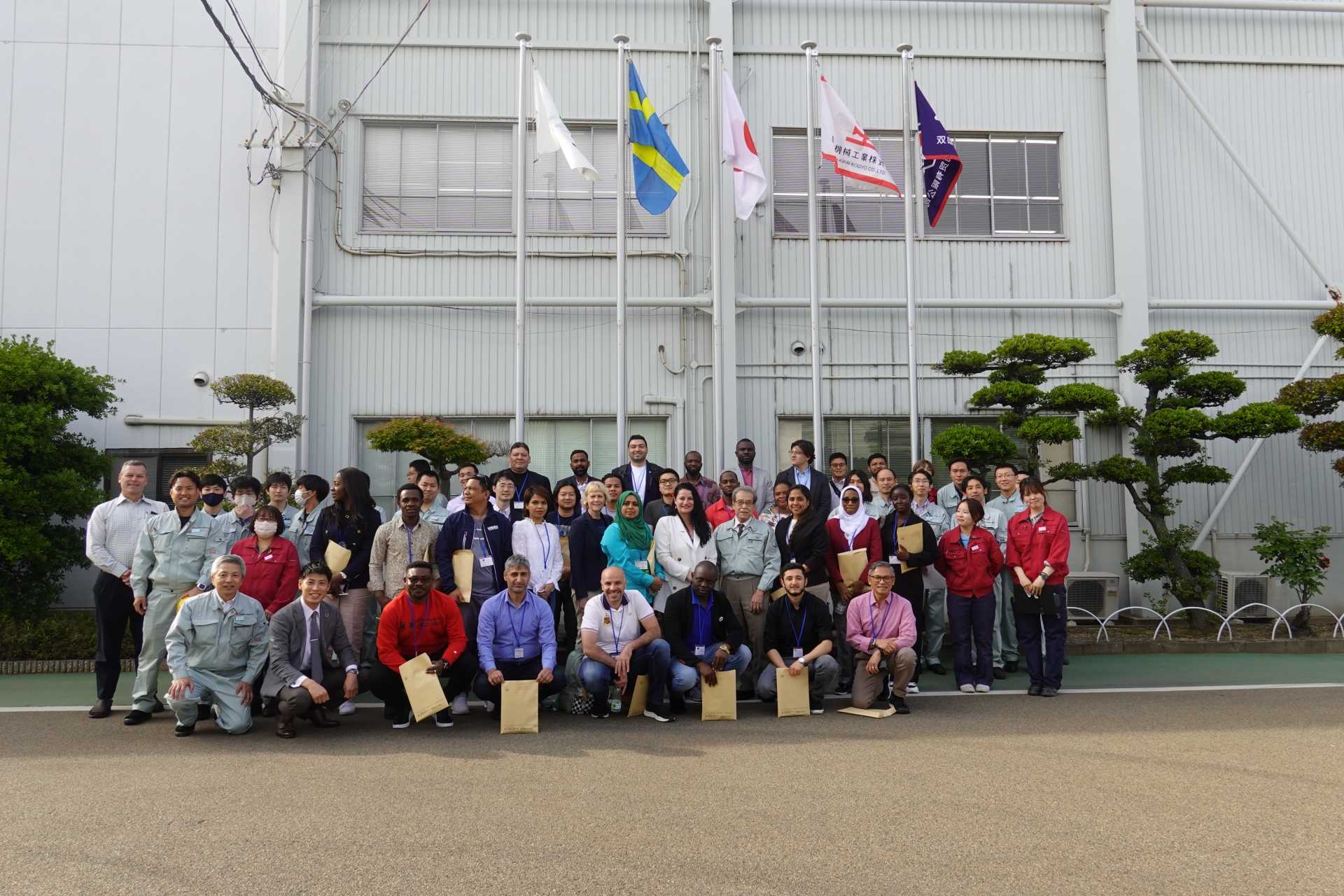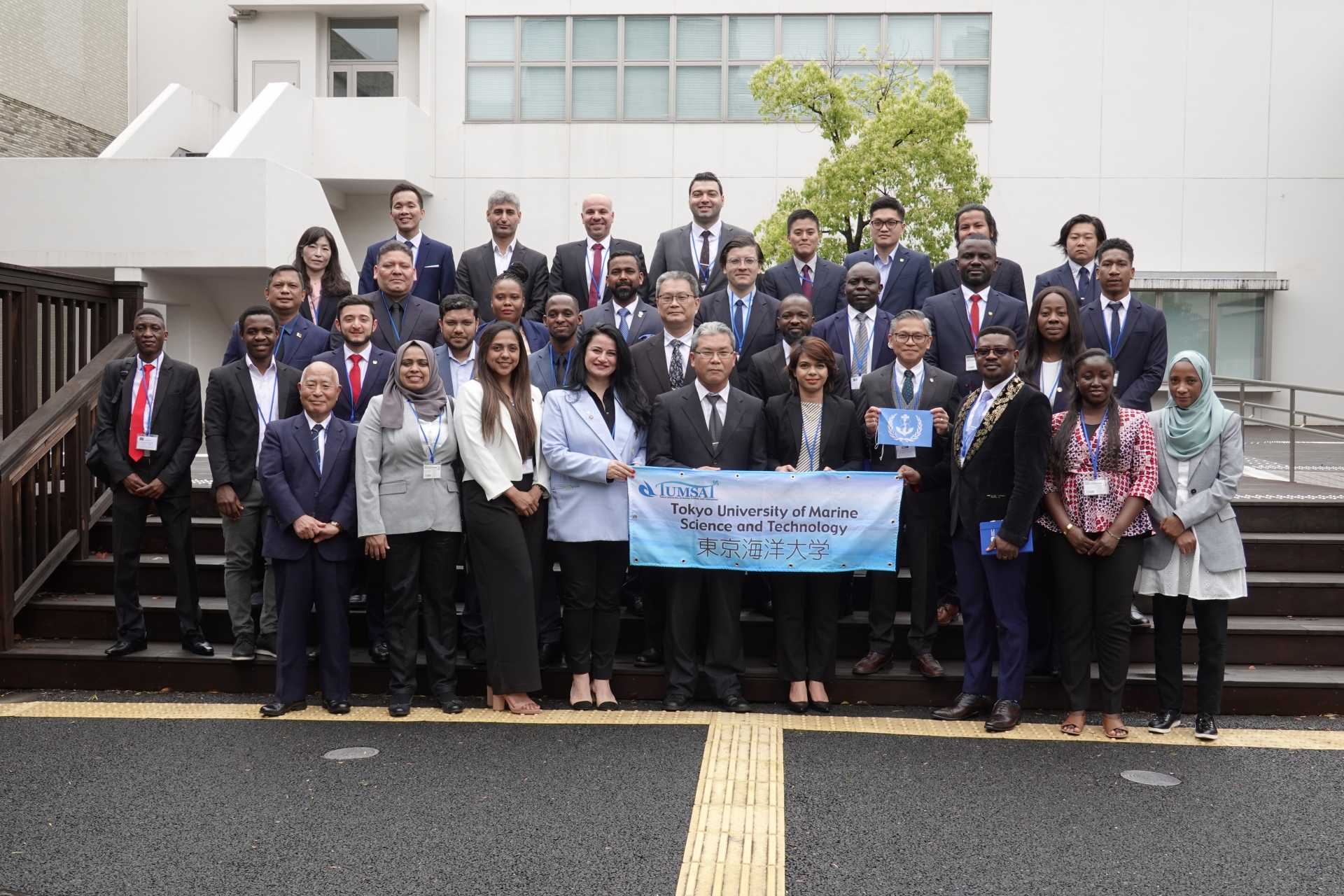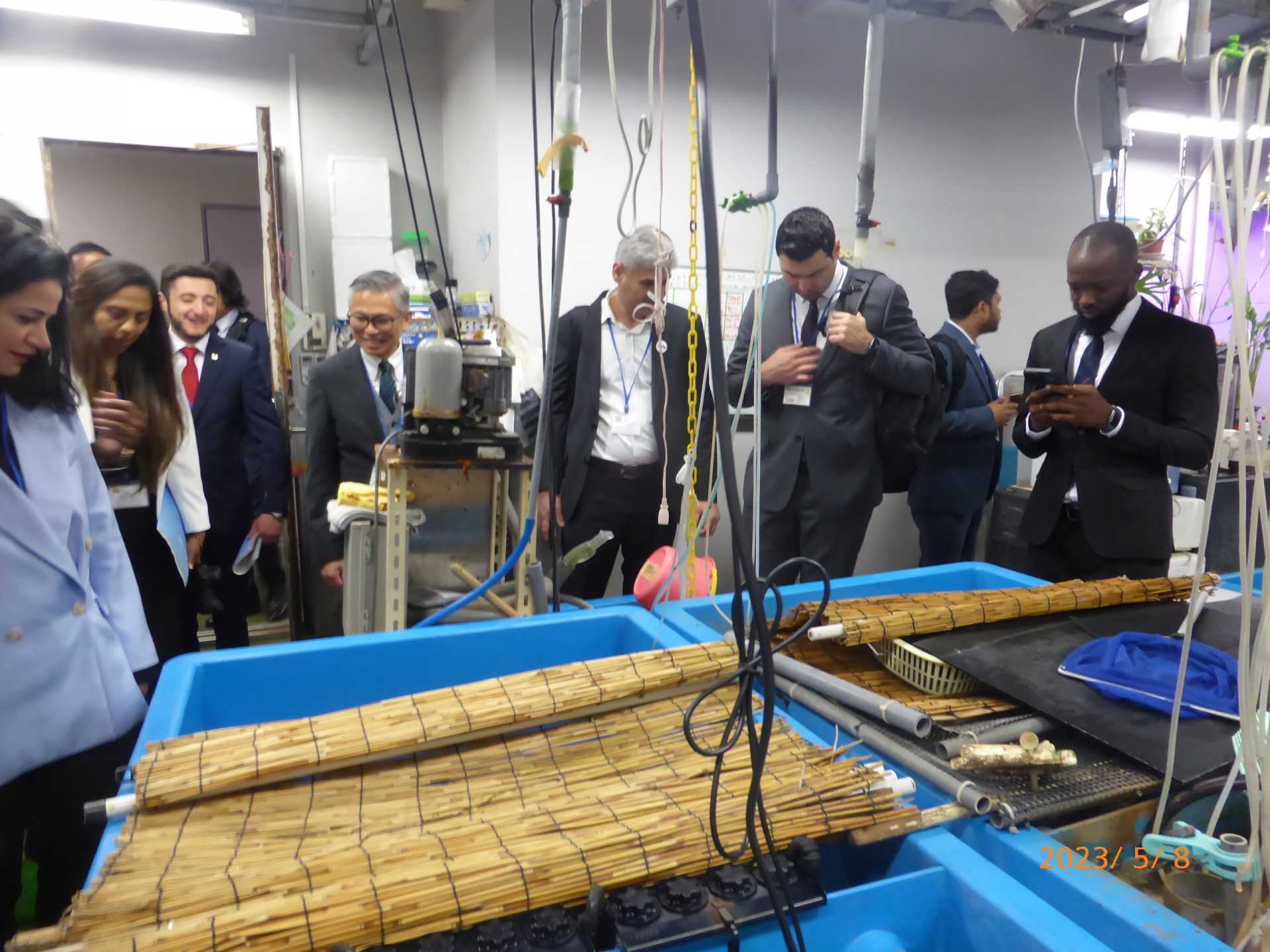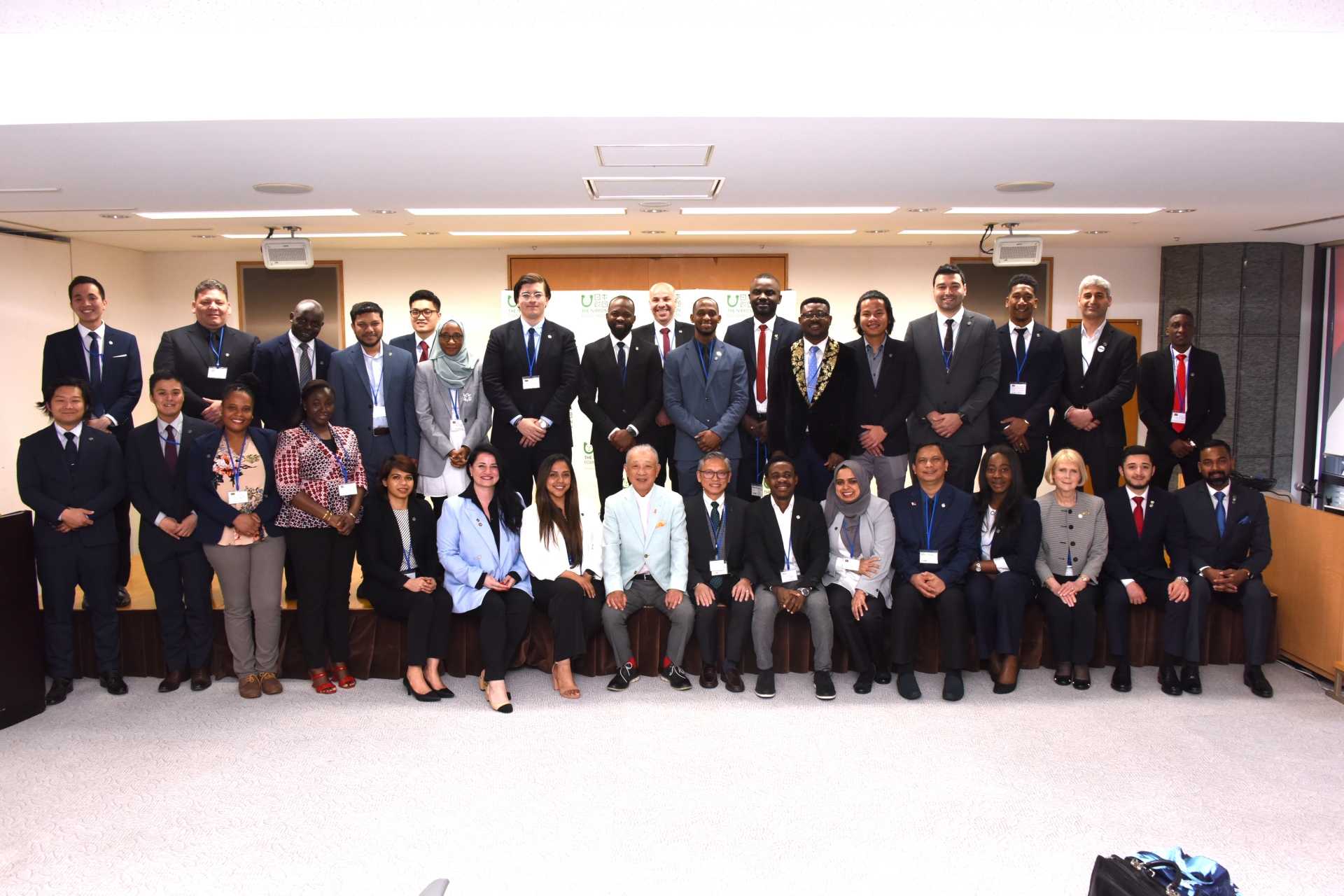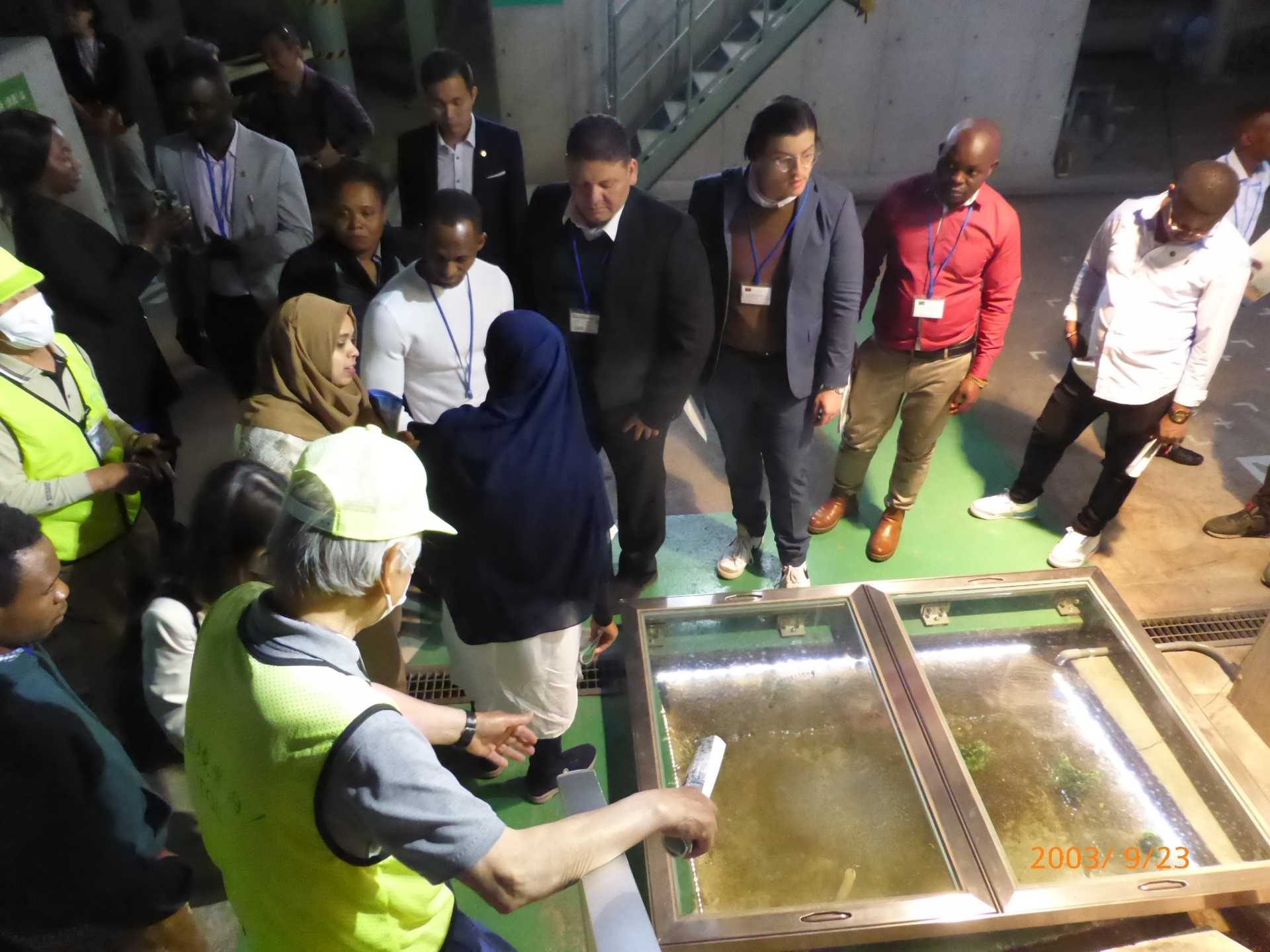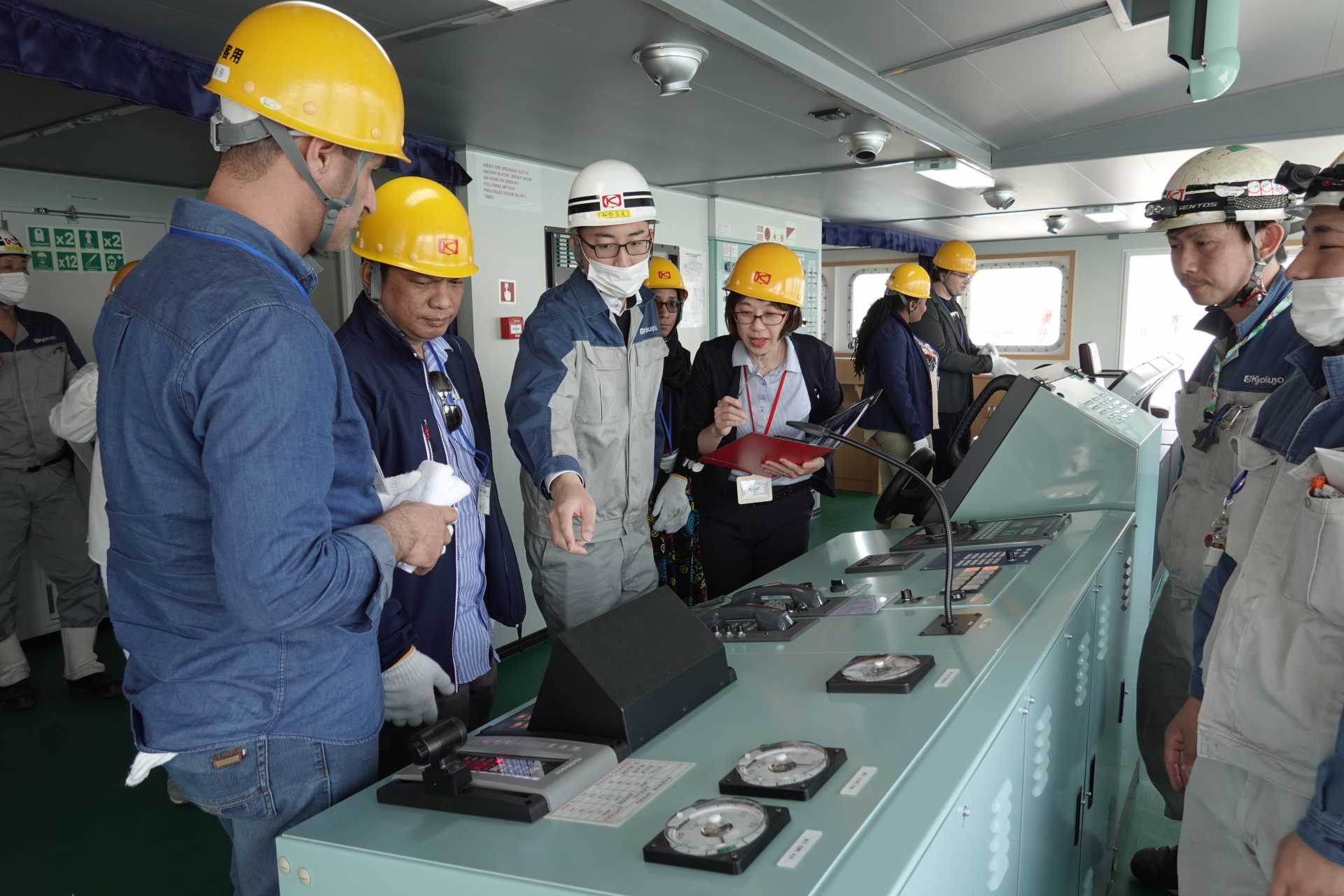Japan Field Study Trip
Japan Field Study Trip 2023
Saturday–Sunday 6-7 May – Malmö to Tokyo
The COVID-19 pandemic affected many things. Amongst these was the annual Field Studies arranged by the Ocean Policy Research Institute (OPRI) of the Sakasakawa Peace Foundation (SPF), which had to be cancelled in 2020, 2021 and 2022. Fortunately for the Class of 2023 and myself, the Field Studies were resumed this year. A group of 30 Sasakawa-funded students, as well as Professor Max Mejia and myself, headed to Tokyo on 6 May 2023. What a great week lay ahead of us.Despite pouring rain the day we arrived, the welcome was truly warm. We were met at the airport by Ms. Emi Shimada from the OPRI, and tour guide Ms. Miyo Wada, who expertly shepherded us to our bus. The skill of “expert shepherding” was one that we observed so many times during the week: no-one left behind!
We met Mr. Eisuke Kudo, Senior Advisor and Mr. Keiichiro Yamada, Program Director to the OPRI at the first lunch. Mr. Kudo’s warmth and enthusiasm is always infectious. We had a great time, despite our travel fatigue. Following an orientation meeting, we had free time for exploring Tokyo in the afternoon and evening. Many students took this opportunity to find their way to Asakusa temple and market or to other iconic tourist sites like Tokyo Tower or the Shibuya shopping area.
Monday 8 May - Tokyo
Monday 8 May was perhaps the biggest and most important day of the week’s activities. After a very informative visit to Tokyo University of Marine Science and Technology, the students paid a courtesy visit to the Maritime Bureau of the Ministry of Land, Infrastructure, Transport and Tourism. The Maritime Bureau has consistently supported the field studies arrangements for many years, and Mr. Shinnosuke Hada, Deputy Director of Ocean Development and Environment Policy Division of Maritime Bureau, travelled with us as an advisor to our field studies. Our visit to the Bureau was a goodchance to express our gratitude for its kind help.
Next was a courtesy visit to The Nippon Foundation where we had the honour of a personal meeting with Dr. Yohei Sasakawa, Chairman of The Nippon Foundation. The students were each introduced to Dr. Sasakawa and they thanked him for the fellowship support they had received, outlining briefly how their studies at the World Maritime University
would benefit the maritime industry in their home countries and regions. The group then sang the WMU Song for Dr.Sasakawa, which he seemed to enjoy, conducting us from his place on the podium. Dr. Sasakawa responded with a warm personal address, and we were then delighted take both group and individual photographs with him. The positive energy Dr.Sasakawa displays is an inspiration to us all.
The day was not over yet! The Welcome Reception hosted by the Friends of WMU, Japan that evening was delightful. Welcomed by Dr. Hide Sakaguchi, Executive Director of the Sasakawa Peace Foundation, the students, Professor Mejia and I enjoyed the chance to chat with senior officers of the Sasakawa Peace Foundation, representatives from various maritime institutions, members of the Tokyo Diplomatic Corps and, not least, WMU graduates who were able to join us. The delicious buffet meal made sure we all in good spirits. The students and WMU graduates sang the WMU Song, to
the delight of the audience.
Tuesday 9 May - Tokyo
The following days were a wonderfully-organized tour of the maritime industry in Japan. On Tuesday 9 May we continued our stay in Tokyo, visiting The Tokyo Metropolitan Government Waste Landfill Sites and the Ariake Water Reclamation Center, both of which were extremely interesting for our students to see.Wednesday 10 May – Tokyo to Fukuoka
Wednesday saw us depart Tokyo by plane for Fukuoka, a very pleasant smaller city. During our stay in Fukuoka we experienced what for me was one of the highlights of our site-visits, at the Kyokuyo Shipyard Corporation. Luckily, our visit coincided with the launch of a new vessel. We had the chance to tour the ship, and then to see it leave the wharf on its maiden voyage. What an experience! Mr. Kudo asked us to sing the WMU Song as it left and of course, we enjoyed singing the ship off to sea, wishing it many safe voyages while we waved from the wharf. Our next visit was to the Nippon Survival Training Center where we were shown some very interesting equipment. It was also interesting to note that the Center trains some international groups as well as Japanese course participants.Thursaday 11 May – Fukuoka to Kobe
Thursday saw us visiting the Port of Hakata, where as well as a port tour we were given a boat tour around the harbour area. Hakata, as viewed from the sea, was quite beautiful and I remember a particularly interesting baseball arena shining like bronze in the sunlight. Of greater maritime interest, perhaps, was the unloading of a vessel in port where I had my first opportunity to witness the efficiency of containers shifted from a vessel to waiting transportation on land. One of our group timed the unloading to 51 seconds per container, which was impressive.Before leaving this area of Japan, we also called at the Kanmon Kaikyo Vessel Traffic Service Centre. The Center provides a radar surveillance service, giving traffic information and control for vessels entering, leaving or navigating through the difficult Kanmon passage. We were very interested to see how this service was provided and I learned about the concept of leading lights in navigation.
Late that day we boarded the Hankyu Ferry at Shinmoji Port, headed for Kobe. Another adventure! Our evening hours were spent in the dining room of the ferry, where our guide Ms. Miyo Wada hosted a traditional Japanese tea ceremony for us to enjoy. This glimpse of Japanese culture was very precious.
Friday 12 May – Kobe to Kyoto
Friday We disembarked in Kobe early on Friday morning. Another busy day of site-visits awaited, firstly to the Furuno Electric Co., Ltd. With a history dating back to 1938, Furuno is now one of the major suppliers of marine radar equipment – and since my return to Sweden I have enjoyed spotting Furuno equipment on boats moored near my home. I know where it came from!Our second visit that day was to HSN-Kikai Kogyo Co., Ltd. where we saw many functions of this interestingly varied company. Having started out making pumps for mines, HSN-Kikai Kogyo ventured into the production of pumps for vessels and then oil/water separators. The latest innovation being pursued is the hydroponic production of fresh vegetables on board ship – which was absolutely fascinating to see. The Chairman of the company, Mr. Kimio Tomofuji kindly met us at the conclusion of our visit, and we entertained him with the WMU Song. Leaving HSN-Kikai Kogyo, our last
site visit, we enjoyed for the last time the “10-minute wave goodbye”, as our new friends there steadfastly stood to wave us off as our bus disappeared into the distance.
Saturday 13 May – Kyoto
Our last day in Japan was devoted to touring the wonderful city of Kyoto. Tour guide Ms. Miyo Wada took us to three temples and a shrine – each of them surrounded by meticulously kept gardens in the Japanese style. The peaceful atmosphere of the green areas complemented the dignity of the traditional buildings so beautifully. Ms. Wada did her best to explain the Zen garden at Ryoanji Temple; I think she gave us food for thought for a long time to come.Sunday 14 May – leaving Japan
We left Japan the next day. At our orientation meeting on the previous Sunday, Mr. Kudo had mentioned two objectives for the field studies: an overview of maritime activities in Japan, and the development of community feeling in the Sasakawa student group. In my opinion, both these objectives were met well.What we do now is remember with great warmth the welcome, the experiences, the knowledge and the friendships. Our sincere gratitude for all the kind and thoughtful arrangements made for us goes to the SPF team: Mr. Kudo, Mr. Yamada, Ms. Shimada and Ms. Naito. To our tour guide, Ms. Miyo Wada, our fondest thanks.
Arigato gozaimasu!
Lyndell Lundahl
Assistant University Registrar
(Student Services),WMU

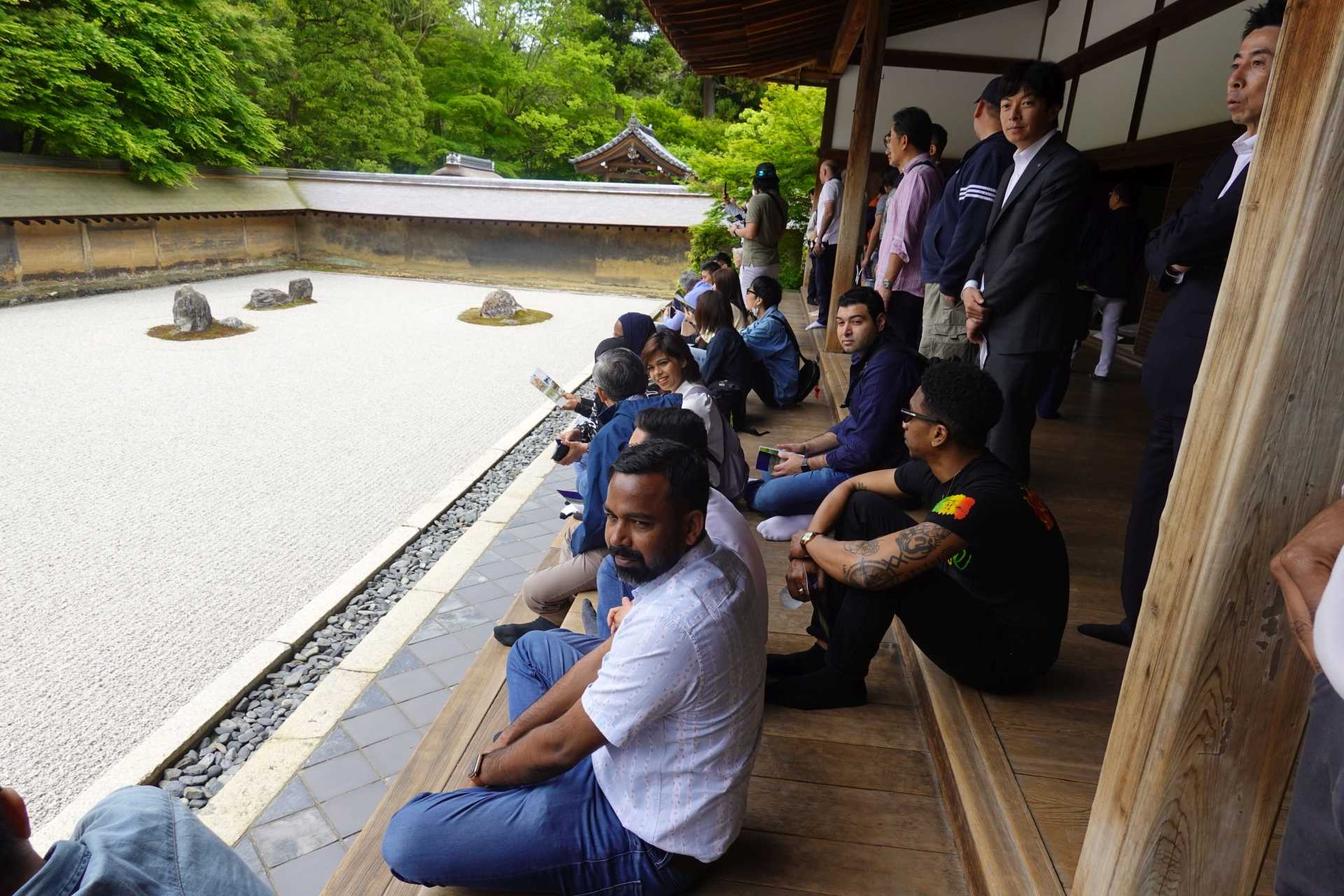
Kyoto
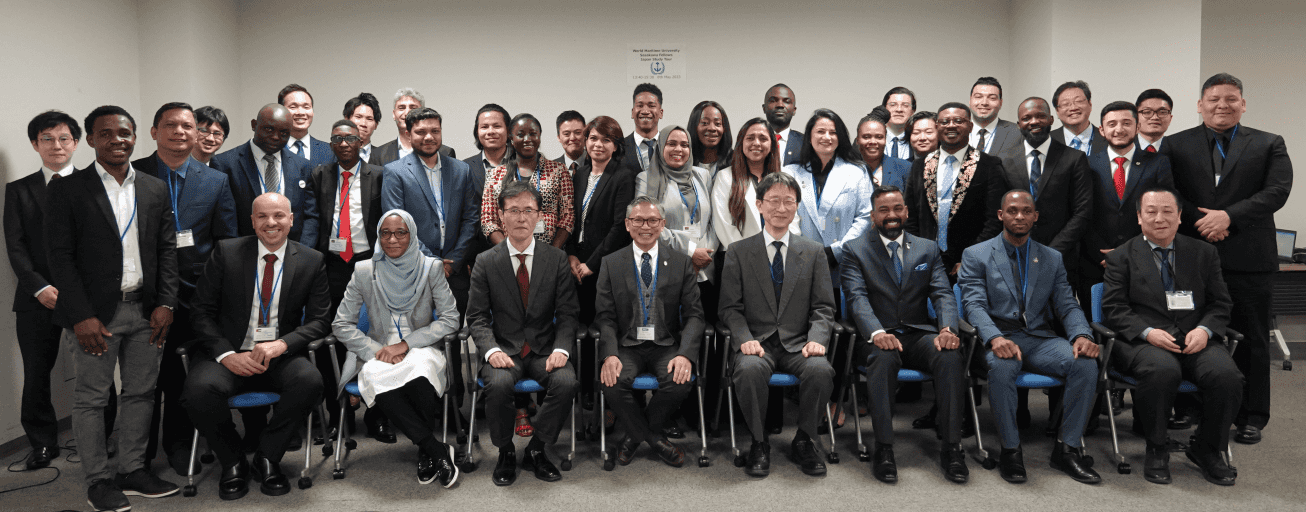
The Ministry of Land, Infrastructure, Transport and Tourism

Welcome Reception

Tokyo Metropolitan Government Waste Landfill Site
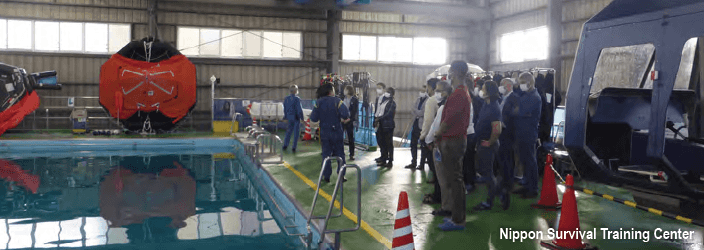
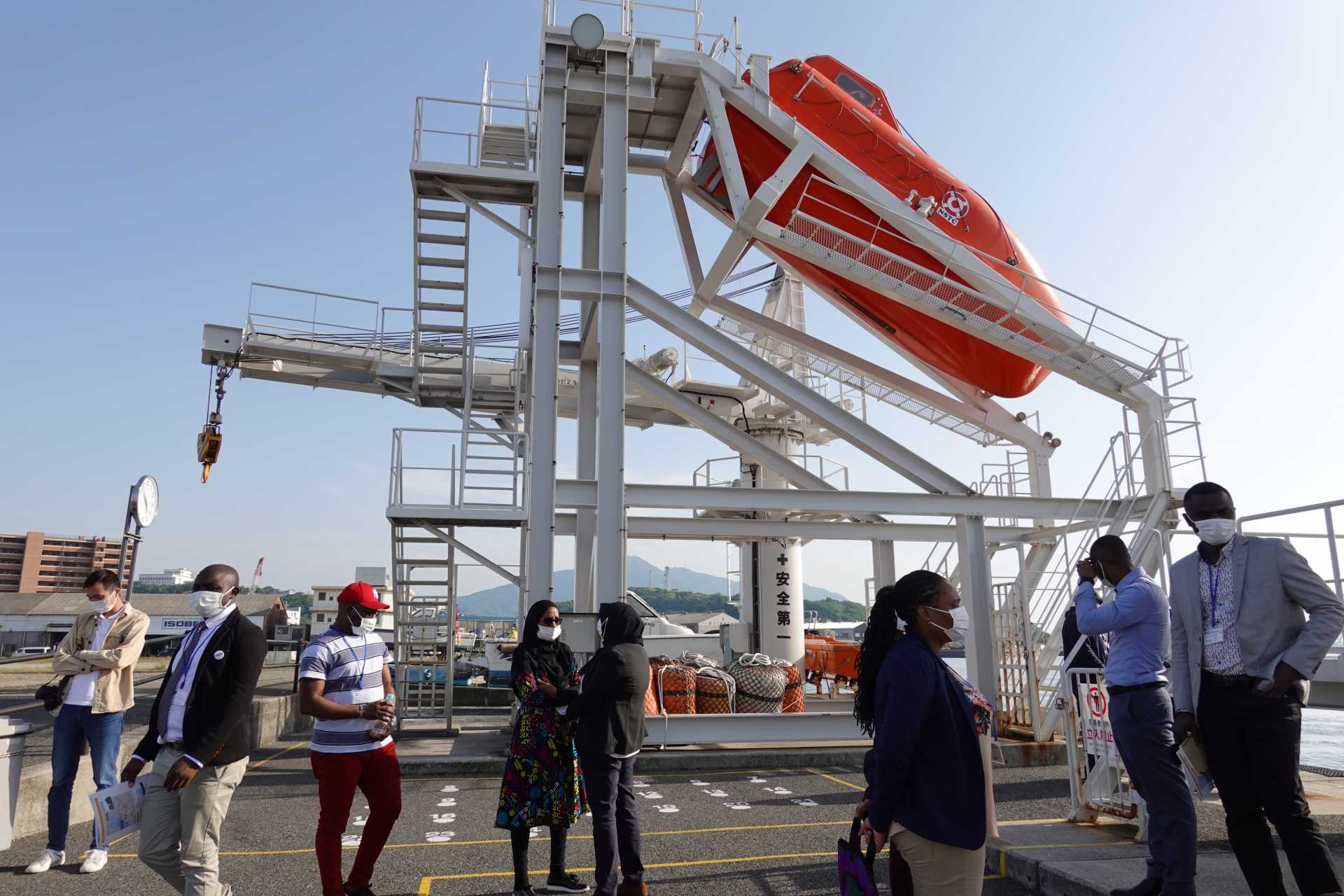
Nippon Survival Training Center

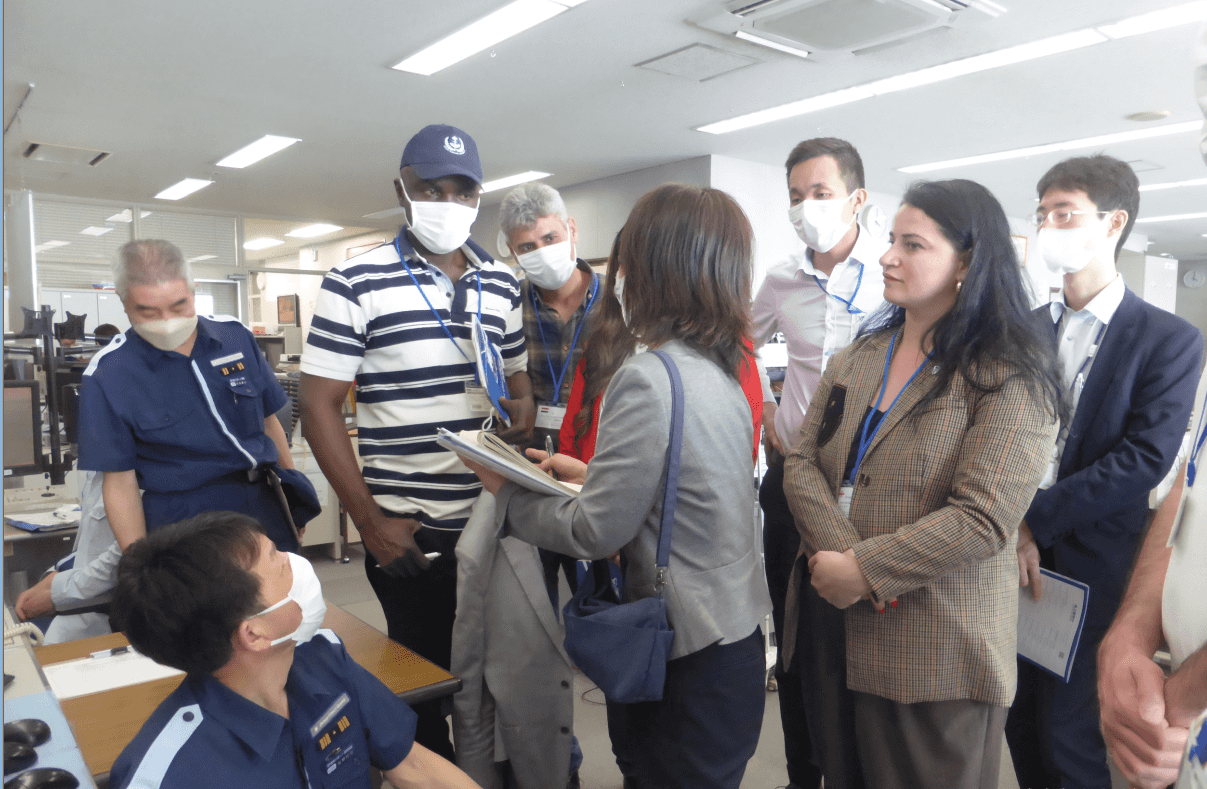
The Kanmon Kaikyo Vessel Traffic Service Center
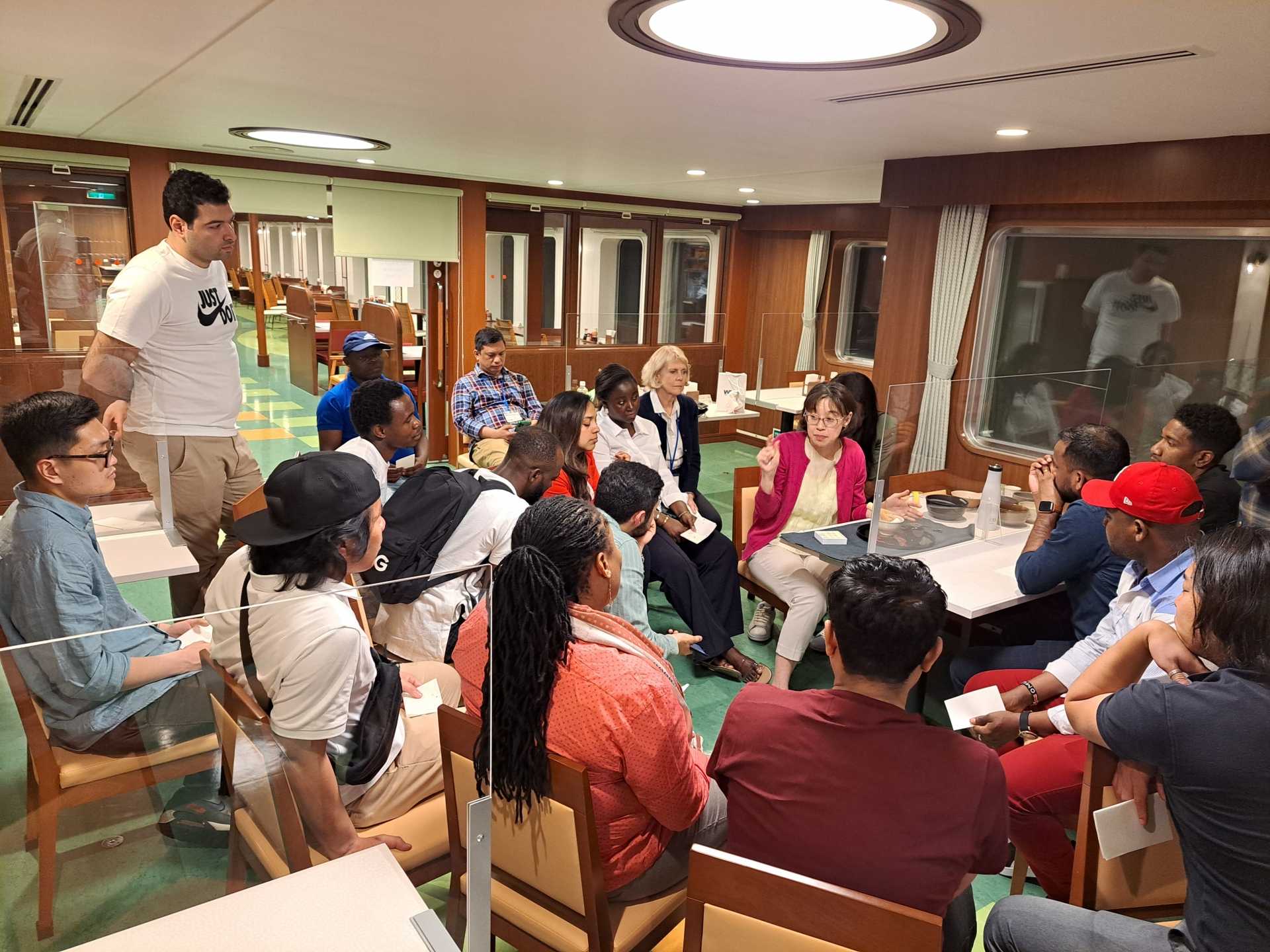

On the ferry
